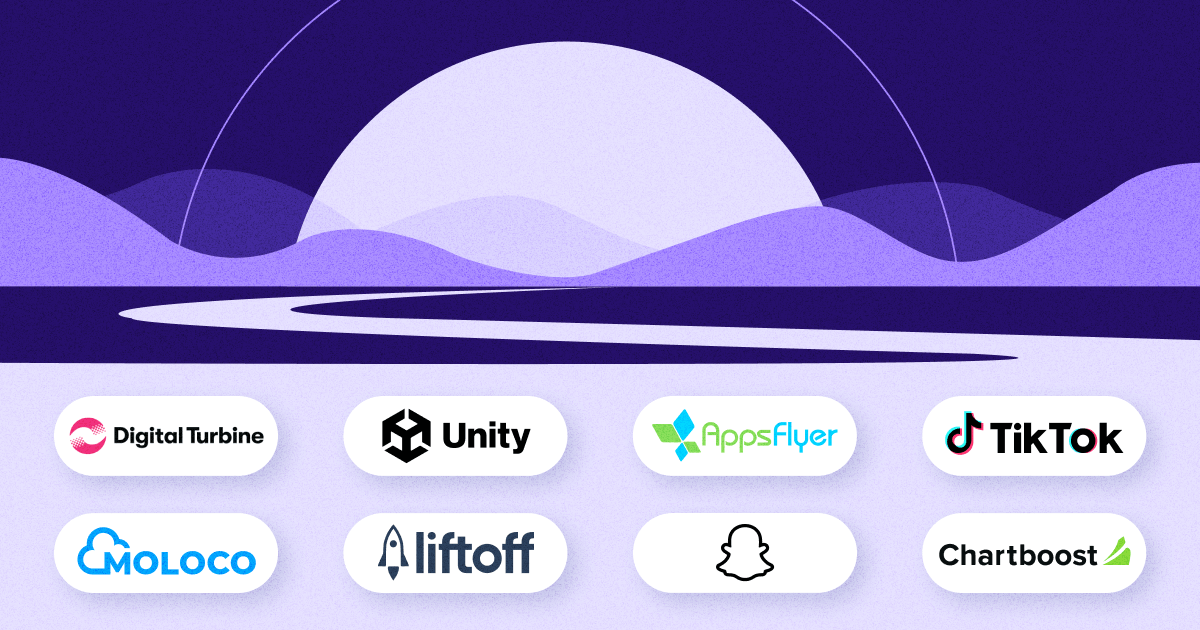
Going global: Insights on international growth for mobile apps

Thanks to global ad platforms and freely available market data, it’s now easier than ever for digital businesses to enter new markets. With fewer barriers to entry than ever before, we constantly see mobile apps growing internationally.
However, the ability to grow internationally isn’t equal across all industries. Exclusively digital businesses and those in non-regulated industries have a significant advantage over hybrid or regulated ones.
As industry analysis is fundamental to business growth, we analyzed 9,000 apps and 1.5 billion non-organic installs to better understand how internationally diversified the top 20 industries are, and identify each industry’s fastest-growing markets.
This analysis provides actionable insights for apps performing industry analysis and those expanding internationally.
Why analyze international diversification?
International growth offers apps many benefits across marketing, product, strategy, and revenue generation. Comparing diversification across industries holds insights into unlocking growth and strengthening defensibility and market positioning.
Apps advertising in multiple countries can attest to the benefits, namely:
- Driving demand and ensuring user growth.
- Acquiring users in under-served countries and languages, often with large populations and lower CAC.
- Generating revenue from ROI positive activity, even in low-scale markets.
- Mitigating risk of revenue loss due to region or geo-specific economic factors.
- Receiving product feedback from a broader and more diverse audience.
- Reducing competitors’ market share.
Which industries are most internationally diversified?
We’ve organized the top 20 app categories and sub-categories, broken down by the average number of countries where apps are generating non-organic installs.
We’ve broken down the results by the size of the app (large = top 20th percentile, medium = 50th-80th percentile, small = bottom 50th percentile). For significance, we’ve limited the apps in our data study to those with a minimum of 1,000 installs per country per month, and removed the outlying percentiles.
Here are a few insights from the data we analyzed:
1. International diversification and app size go hand in hand
The chart below shows the distribution of international diversification by app size. The larger the apps, the more diversified they are. Or, the more diversified they are, the larger they are. Of course this is the case, as apps running globally are available to more people. This is the first and most obvious benefit to advertising globally.
While 64% of large apps advertise in more than one country, and 29% in 11 or more, the vast majority of small and medium-sized apps are only advertising in one. That is likely a result of resource constraints and strategy prioritization.
2. Understanding industries that are less diversified
The majority of the top 20 industries are exclusively digital and non-regulated. And the lower-ranked industries have additional hurdles when expanding internationally.
- Shopping is a hybrid industry; businesses must maintain a physical supply chain, which makes selling globally more difficult.
- Entertainment has strict laws and contracts which govern international content rights and distribution.
- Finance is a heavily regulated industry, subject to different regulations for each sub-industry and market.
3. Do the lower-ranked industries have an opportunity for global expansion?
Yes. Absolutely. Here are two examples.
1. Shopping
When looking deeper, we found that 57% of Shopping apps are only advertising in their home countries, and 77% are only advertising in one country.
The opportunity for global expansion exists in part as a result of the combination of the following reasons:
- Demand is global.
- People spend more time using Shopping apps than they spend shopping via mobile web.
- The popularity of direct-to-consumer or direct-to-distributor/fulfillment center drop-shipping continues to grow, helping businesses avoid many supply chain concerns.
- Regional economic treaties (USMCA and APEC, for example) encourage trade within economic zones
2. Finance:
Considering the regulatory barriers to entry, it’s odd to say Finance apps have an opportunity to be more international. Currently, 83% of Finance apps are only in one country, and 13% are between 2 and 10.
However there are a few reasons to expect international growth for Finance industry apps.
- The traditional finance industry is being disrupted, and consumers want this disruption to happen quickly (4.5% of all app installs are Finance apps, up 2.5x from 2017).
- Like Shopping, demand for digital Finance apps is global.
- It’s already started. Some Finance apps have prioritized international expansion. For example, Revolut supports customers in 36 countries, Ecobank in 33, N26 in 23 and Monese in 20.
4. The sub-industry can drastically differ from the overall industry
The reasons why some sub-categories don’t follow their overall category’s behavior isn’t clear, which makes the importance of marketers capitalizing on global opportunities that much more important.
Here are two examples:
- Finance – Investments: the sub-industry is ranked 4th among the top 28 sub-industries. All other Finance sub-industry are ranked 25th-28th, and the Finance industry is the 3rd least diversified overall industry.
- Gaming is the 2nd most diversified industry. However, Gaming – Social Casino is 15th out of 28 sub-industries.
Which markets should you explore?
There are many benefits of international growth, as we’ve listed above.
But the million dollar question is to which markets should you expand?
To answer, we identified the fastest-growing markets per category (based on the % change in the number of non-organic installs and the number of apps running campaigns in each country among the top 50 markets).
Many countries are experiencing a mobile app revolution, appearing on the growth list for many of the sub-industries we analyzed. In order, the top 10 growth markets (industry agnostic) are Russia, Brazil, Saudi Arabia, Vietnam, United Kingdom, China, France, Egypt, Japan, and South Korea.
Others are simply demanding more specific services, such as Australia and Canada, showing nearly 13% yearly growth for Casual Gaming, or China reaching 10% yearly growth for Productivity apps.
Conclusion
Apps advertising internationally benefit across marketing, product, strategy, and revenue generation. Due to the rise in global ad platforms and easily accessible data, marketers now play a bigger role in identifying and capitalizing on international growth opportunities.
We’ve analyzed international diversification by industry and app size, demand for each sub-industry by country and identified the fastest growing markets overall.
- Use this analysis to understand how your company compares to the benchmarks, and if you’re advertising in the growth markets we’ve identified.
- Use the AppsFlyer Performance Index to pinpoint the best media sources to test in multiple markets and industries.
- Most importantly, utilize in-depth 1st party data analytics and profitability models.
Spread your wings (but only if the data says so)!





